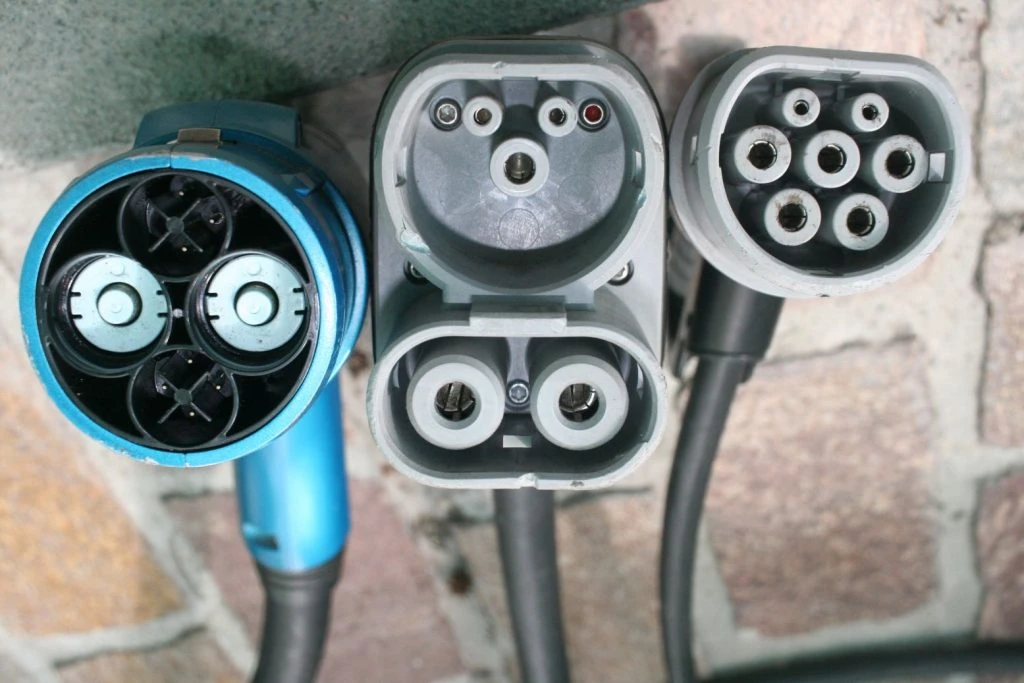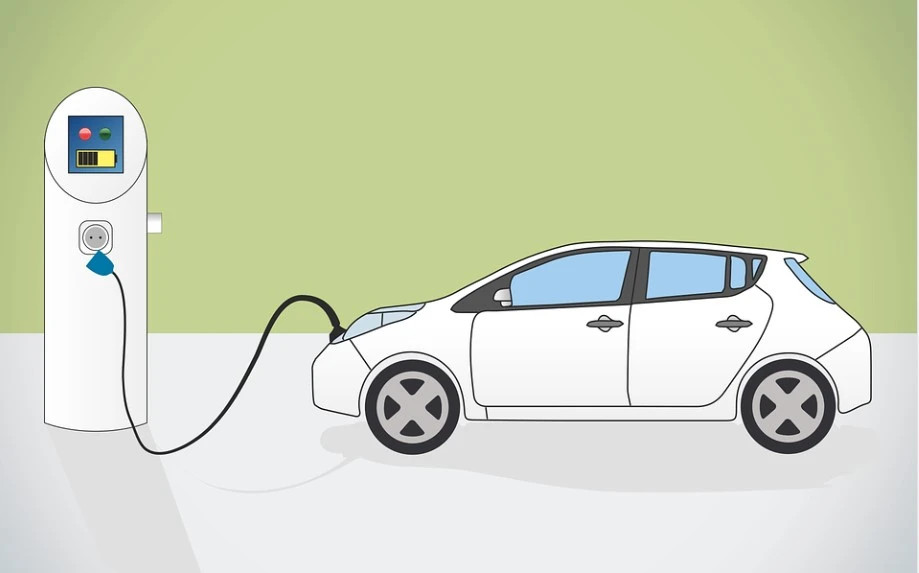Sustainability/Green
One Thing They Don’t Tell You About EVs When The Rubber Meets The Road

The thing that a few of the proponents of EVs don’t often tell you about is about the tyres. They’ll tell you about how EVs produce less in the tailpipe emissions department and about how quiet they are and how much better the range is these days, but if you’re new to the world of electric vehicles, you may be in for a surprise the first time you have to change the tyres.
What they don’t tell you is that EVs need special tyres and fitting the sort of tyre that worked perfectly well for an ICE vehicle of the same size or even the same weight won’t work on an EV. The tyres on an EV have to cope with a number of the characteristics of electrical motors. Specifically, the tyres have to cope with the increased torque, the weight of the battery pack, the need for better energy efficiency and the need to reduce road noise.
Because electric motors behave differently from internal combustion engines, they have much higher torque figures. Torque, as we should remember from our high school physics class, is rotational force (as opposed to linear acceleration), so it bites in where the rubber hits the road – literally. The more torque, the more force is applied. Now, I like a good bit of torque in a motor, but tyres don’t like it as much, and too much can wear them out more quickly. This means that an EV has to have tougher tyres. They also have to have more grip to avoid slipping when accelerating, especially in wet or slippery conditions.
On top of that, the tyre has to handle the increased weight. You might not realise this, given that most EVs tend to be smaller urban vehicles (although this is changing). However, EVs weight more because of the battery pack. In fact, the battery pack can make up to quarter of the weight of an EV – and yes, this outweighs the bits that aren’t in an EV, such as the radiator, the fuel tank, the exhaust system and so forth. The battery pack also needs to be protected against mechanical damage (such damage is very bad news for the battery and is the leading cause of electrical car fires). This extra weight applies to hybrids as well as to purely electric vehicles (battery electric vehicles or BEVs). This means that the sidewalls on the tyres for EVs need to be stronger and heavier to carry the weight.
These two factors alone would be enough to indicate that putting regular tyres on an EV or hybrid vehicle is a bad idea, as the tyres would wear out more quickly – a lot more quickly! In fact, some have argued that if you are concerned about the environment, you should bear in mind that although EVs produce less from the tailpipe, they create more particulate matter from tyre wear. This is why several of the big-name tyre manufacturers have created special tyres for EVs.
If you’ve ever looked at the tyres made specifically for EVs, you may notice that they are taller and thinner. This is to decrease the rolling resistance. Going back to high school physics once more, something that’s heavier has more inertia and thus requires more force to get moving (think about how easy it is to kick a soccer ball rather than a medicine ball). Naturally, a tyre that’s stronger and more resistant to wear will be heavier, which would mean more inertia and thus rolling resistance. Making the tyre narrower will reduce the drag and thus the rolling resistance. This is important, because if you have waited half an hour to charge up your EV from a public charging station, you want that charge to last as long as possible before you have to do it again, so reducing the drag and the rolling resistance will be more energy efficient.
Lastly, there’s the noise issue. In an ICE vehicle, the rumble of the engine drowns out the road noise. In an EV, there is no rumble, so road noise is the only thing you can hear. Road noise isn’t quite as soothing as engine noise (most of the time), and that’s the only thing that you can hear in an EV, especially if you’ve switched off the sound system to save power and extend the battery range.
You can put tyres designed for other cars on EVs and hybrids, but three things need to be borne in mind. Firstly, you have to be sure to get something that can handle the extra weight. Secondly, a regular tyre will reduce the range of the battery. Thirdly, the tyre will wear out a lot more quickly, meaning that you won’t actually save anything by putting regular bog-standard tyres on an EV.
It’s best to put the proper tyres on an EV, as you will get better range and longer tyre life out of them. Admittedly, these tyres are more expensive (like performance tyres on a splashy sports car). They will also wear out more quickly, but not quite as quickly. This is something that tyre manufacturers such as Michelin are working on but you will have to factor in if when deciding if an EV is right for you and your budget. Despite being built tougher, these tyres still need to be maintained correctly – checking the pressure and rotating them regularly.
As with all things, the issue of battery weight and tyre wear are things that researchers are looking into and trying to improve, so we can look for things to get better (and hopefully cheaper) as time passes.
Plugging In A Plug-In
Like anything else with batteries, an EV of the PHEV or BEV type (i.e., plug-in hybrid EVs and full battery EVs), will need to be plugged in and charged. In my previous article, I talked about the different types of charger and the different charging speeds.
However, there’s more to know if you’re new to the world of EVs and plugging in instead of filling up. This is because different vehicles have different types of connectors or plugs. Obviously, you can only plug into something that has a compatible connector. This may sound confusing if you’re used to filling up a petrol or diesel tank, where one size fits all. However, if you’re used to negotiating all those different cables and chargers for Android phones, Apple phones, USB chargers and HDMI cables, then you will easily get the hang of the different connector types used in EVs.
There are a few basic types: Type 1, Type 2, CCS 2 and CHAdeMO. All of these have different pin patterns, meaning that you can’t plug the wrong one in by mistake (kind of makes you wish they had done something similar with ICE vehicles so that nobody put petrol in a diesel tank or vice versa).

Type 1 AC connectors are also known as J1772 or SAE J1772 connectors, or just J plugs. They are mostly found on older EVs and PHEVs. The connector has five pins that look a bit like a smiley face.
Type 2 AC connectors are also called Mennekes connectors after the German company that invented them. They look a bit like a mutant hair dryer. They are the standard connector in Australia and Europe found on most EVs sold in the country today. Type 2 Mennekes connectors is often found in combination with the CCS connector – if you look carefully, you can see that the “surprised face” circles in the top part of the CCS connector combo is hidden in the seven circles of the Mennekes connector.
Tesla connectors are based on the Type 2 connector to allow you to use it to charge a Tesla at home via AC charging but has a special lock-out design for the DC chargers, meaning that only Teslas can charge up from the dedicated Tesla DC ultrafast charging systems.
CCS stands for combined charging system. The bottom half of a CCS connector allows for fast DC charging from public outlets, while the top half is for AC charging. Although it is possible to find EV models that have Type 1 up the top and the DC connector down the bottom, these are very rare in the Australian market. Most EVs in Australia that have these CCS connectors (technically, these are CCS 2 connectors) will have a Type 2 pin arrangement up the top.
CHAdeMO connectors get their name from the French phrase “Charge de Move” (“movement using charge”). Rumour also has it that it was derived from the Japanese phrase “o cha demo ikaga desuka”, which means “How about a cup of tea?”, as the idea was that charging with a CHAdeMO charger would take as long as having a cup of tea. I don’t know how long it takes you to have a cup of tea, but I don’t think they’re referring to the full Japanese tea ceremony here, which can take up to four hours. However, the CHAdeMO connector is used for DC fast charging, which can take about half an hour. These connectors are mostly found on earlier Japanese models such as the Nissan Leaf.
When you buy an EV, it will probably come with at least one cable so you can plug it in and get started. However, it’s often a good idea to have a range of different cables with different connectors. For example, you can get a cable that can plug into a Type 1 outlet even though you’ve got a Type 2 input in your EV, or one with Type 2 at both ends for public charging stations where BYO cable is the expected way to proceed. If you’re anything like me when it comes to cables and remembering what goes in where, it might be a good idea to attach a label or colour-code the different cables if you have several, and to store them in separate bags.
Ready, Set, Charge!

If you are one of the many who has opted for an EV for whatever reason, then the time will come when you have to charge it up – just like you have to charge up your phone, e-reader or laptop. However, charging an EV is not quite the same as filling up a petrol or diesel tank, and if you’ve never done it before, there are a few things that you’ll have to get used to, especially regarding the different charging speeds.
Deep breath required here. There will be maths.
With all types of charging, the exact amount of time you’ll need to charge the battery will depend on the voltage of the outlet and the battery capacity. The formula for working it out is:
E = P × t
Makes you feel a bit like Einstein, saying that. E is energy, P is power and t is time. Rearrange this and you get t = E/P or, in plain language:
Your EV’s battery capacity (in kWh) ÷ power output of the charger (in kW) = hours of charging time

This equation, however, mainly applies to charging to 80% rather than 100% (and this is the charge time figure that you’ll see in specs and stats from the manufacturers of EVs). This is because charging isn’t a linear process and it slows down as the battery gets closer to full charge. It’s a mechanism that helps prevent overheating. If you want to charge to 100%, bear in mind that doing so will take a bit longer.
The thing that most people are concerned about is the charging speed. In fact, the charging times are one factor that can put people off purchasing an EV, especially an all-electric BEV or a PHEV. Here in Australia, we have reasonably sensible names for the different charging speeds, unlike in other countries, where you have to ask a few questions to be sure what you’re talking about during a discussion of fast charging – you’ll hear some people talk about fast charging as something different from rapid charging (I feel sorry for those who don’t speak English as their first language because – well, you try explaining the difference between fast and rapid!). Here, we keep things straightforward, calling the two most common charging speeds Level 1 and Level 2, with only the fastest type being called “DC fast charging”.
Level 1 charging is simplest type of top-up charging that you can do at home or anywhere else you can access a standard common or garden power socket. It seems very simple but the trouble is that this type of charging is very, very slow. Recharging a completely drained battery will take at least a whole day, as in a 24-hour day. It could even take 48 hours, which is fine if you’ve got the whole weekend to recharge your car’s batteries as well as your own and don’t have to go anywhere. On the other hand, if you find yourself at a relative’s place in the country and not enough charge to get you home, you can just plug in and recharge enough to get you home again, or at least to the nearest public charging station (it would be nice if you compensate your relative for the power you’ve used, same as if they let you have a jerrycan of petrol if you’d run out). You may hear this referred to as trickle charging.
Level 2 charging is the sort of charging you do with one of those wall boxes in your home, and Level 2 chargers are what you’ll find in typical public chargers of the kind you’ll see at the supermarket, mall or gym and, if you’re really lucky, at work. Typically, you get around 7.2 km of mileage for every 10 minutes of charging with a 7.2 kW unit, or 22 km of mileage for every 10 minutes with 22 kW charging. (Is anybody else getting flashbacks to the sorts of word problems we had to solve at school?)
However, remember that these mileage figures are approximate and are under ideal conditions. If you have a heavy load, if you have to go into a headwind, or if you want to run the lights or heaters or play music, you’ll reduce the range.
Commercial outlets will often provide chargers not just for their customers’ convenience (although this is certainly part of their motivation) but also as a marketing ploy. If you need to ensure that you’ve got enough charge in your battery to get you home again after work and shopping, then you may need a couple of hours to charge the battery to the right level. However, it may take you only one hour to do your workout at the gym or to pick up your groceries, leaving you with time to kill. Chances are that you’ll spend time in the gym cafeteria or that you’ll spend a bit longer in the supermarket browsing the shelves to fill in the time and will thus spend more money, which is what the commercial outlets are hoping for. Just be aware of this little ploy and budget for it, develop some iron self-discipline and a healthy bit of patience, or take a book. Just don’t make the mistake of sitting in your car doing things on your phone or laptop with your device plugged into the charger in the car!
Speaking of budgets, a home wallbox will have to be bought separately when you buy a new EV. It’s a good idea to buy one, as otherwise you’ll be relying on super-slow trickle charging or public charging stations to top up the battery. It will also need to be installed by a professional electrician, like your oven or hot water cylinder and for the same reasons. You’ll also have to factor the cost of labour in as well. This is something to keep in mind.
DC fast charging (aka rapid and ultra-rapid charging) uses DC electricity, whereas Levels 1 and 2 use AC electricity. The best known DC chargers are the Tesla superchargers even though, ironically, the original Nikola Tesla promoted and popularized the use of AC electricity. How fast this type of charging will be will depend on the battery, but charging can be done in less than an hour, depending on the kW rating and the type of car. Some EVs charge faster than others. It has to be remembered that not all EVs are compatible with DC fast charging; this is often the case with PHEVs. This is something to check and think about when you buy an EV.
It’s also important to understand the different types of connectors or plugs, but that’s another story for another time.
New Cars, New Year.
Happy New Year to you all! 2023 sees some brand new cars coming into view, and we’re set to observe a considerable increase in the number of EVs sold on our shores. Here’s a brief look at some of the exciting cars and SUVs you can get your hands on in the near future!
Alfa Romeo Tonale

Here’s the first of the Alfas that take the special brand into EV mode. The Alfa Romeo Tonale Hybrid kicks it off with its hybrid engine offering the new 48-volt hybrid propulsion system. You’d expect an Alfa to be sporty, and the nicely designed compact SUV delivers on this front. Comfortable interiors and decent technology make this a good way of upgrading into 2023.
BMW iX1

The smallest X model from BMW comes in as the X1, and the iX1 is the EV model with a battery range up over 400 km. Nicely laid out interiors, an athletic driving style (typical Beemer), and a good dollop of performance make this a great new compact SUV.
BYD Atto 3

The BYD Atto 3 is a new kid on the block for Australia. Being an electric medium-sized SUV with a decent range makes this an efficient EV for the new year. The Atto 3 also offers a comfy interior and plenty of the latest technology and safety features.
CUPRA Born

CUPRA cars are exciting. They have plenty of performance and are generally a well-priced product with high-end features. This new model called the CUPRA Born is an EV with a handsome range of beyond 500 km. The CUPRA Born is an exciting car to look at, and it comes with advanced technology and great connectivity.
Ford E-Transit

Ford’s lovable Transit has a new ticker with the latest vans now offering electric power. This is a brand new, full-size, pure-electric E-Transit that features a 68 kWh battery and a driving range of up to 317 km. Ford say that it is possible to fast-charge the E-Transit from 15% to 80% in a bit over 30 minutes.
GWM Tank 300

One of the best vehicles to come out of 2023 will be the impressive looking GWM Tank 300. Doesn’t it make a statement! The Tank is powered by a 2.0-litre petrol-electric hybrid system, and the internal-combustion engine offers a juicy 180 kW. Nappa leather, all the tech, and very handy off-road makes this a hugely appealing.
Lexus RX

Toyota has their luxury Lexus brand offering their latest RX. If you’re wanting a new hybrid, these are some of the best ones out there. Toyota make a great hybrid powertrain with smooth performance and impressive efficiency. The RX interior sees an updated luxury interior design with ever-impressive build quality. The RX is roomy too and very comfortable.
Maserati Grecale

Maserati is becoming ever more affordable. That’s a great thing because they make great cars. The new Maserati Grecale is a front-engine, medium-sized luxury SUV that comes with the promise of plenty of performance. Three engines are available: two 2.0-litre petrol motors and a 3.0-litre V6 petrol. Generous on the equipment levels, the Grecale will be rewarding to drive.
MG4

MG offers the new MG4 hatchback this year. It is an affordable electric hatchback that has been packed full of innovation, style, technology, and an impressive 440 km driving range.
Nissan X-Trail E-Power Hybrid

Nice to look at, and equally at home off-road as it is on, the Nissan X-Trail E-Power Hybrid SUV is very comfortable and very well-equipped. Rear cargo capacity in the 5 seat version of this awesome SUV is 575 litres (super handy for a family). A 7-seat option is also available. The entry point model is a mild hybrid version and uses a 1.5-litre petrol most of the time. The other powerplant uses the same 1.5-liter ICE, but it doesn’t connect to the wheels directly. Instead, it becomes the electrical generator of the system that works in unison with a small battery operating as a buffer. The wheels are fed power via electric motors.
Renault Kangoo

Renault’s new Kangoo definitely can do, especially with its brand new E-Tech EV versions becoming available for the Australian market. This will be Australia’s cheapest electric van. The E-Tech has a 90 kW/245 Nm electric motor that drives the front wheels via a single-speed transmission. You should easily run about town for well over 250 km before needing to recharge.
Keep your eyes open for these new models travelling our roads and on showroom floors across Australia. Also keep your ears open via Private Fleet, where we’ll keep you up to date with what other new models are coming our way shortly. All the best for 2023!